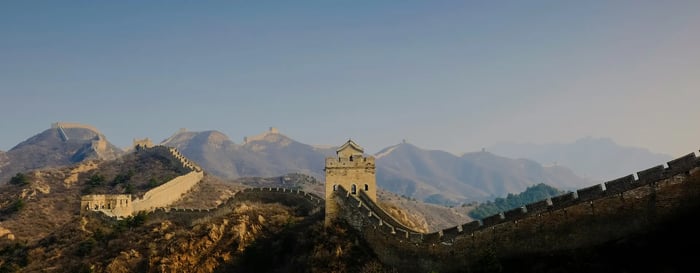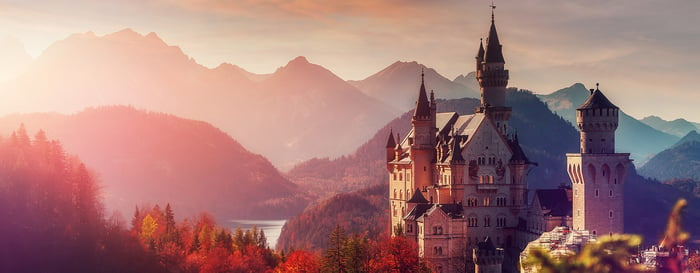Angkor Wat, Cambodia is a magical place where a certain spiritual energy seems to fill the air. The centuries-old temple remains and the saffron-clad Buddhist monks wandering around create a feeling of other-worldly peace in which modern troubles seem to more easily fall away, and serenity seems more easily attainable.
One very personal way to experience this in even more depth is to participate in a blessing ceremony at a wat, or temple. A monk blessing is a tradition that dates back hundreds of years in Cambodia, and is performed for special occasions and auspicious dates, as well as any average day and for any person who would like to be blessed.
I was invited to a private blessing ceremony by the monks at Wat Damnak. Before arriving in Siem Reap, I did not know it was even possible for an ordinary person to be part of such a ceremony or even to enter a private temple like Damnak, where monks were residing and working. My partner and I were told ahead of time to bring offerings, which could be anything from small token gifts to food.

Wat Damnak was a royal palace during the reign of King Sisowath — the name, “dam nak,” is Khmer for palace. Today it is a functioning pagoda, as well as home to several social initiatives including a school, two charities and vocational training for young women.
When we arrived at Wat Damnak, a man wearing regular street clothing, jeans and a t-shirt ushered us in. We were soon greeted by a monk, who led us to one of the wat’s many temples. The open space had a marbled tile floor, with a roof held up by dozens of marble columns and a shrine at the front, full of flowers and candles and statues of the Buddha.
Breezes wafted through the open archways as we were invited to sit on the woven mats that were spread around the floor, with flower petals strewn across them. Two other monks, including an elder — head monk Ven. Chom Nal — joined us and we sat facing each other on the mats. Our present offerings were placed between us.
One of the younger monks lit incense on either side, while the elder began chanting. The rhythmic sound washed over me and lulled me into almost a meditative state of mind. I was aware of the birds chirping outside, the smell of the incense, the feel of the cool marble through the mat beneath my legs. Whatever worries I might have had outside this place seemed to dissipate as I listened to the monk’s chanted blessings.

After a few moments more, the elder monk seated in the middle facing us picked up a metal tube and shook it toward us as he continued chanting. Light sprinkles of water misted lightly on my hair and shoulders and arms.
This offering of holy water symbolizes the cultivation of virtues such as calmness, clarity, and purity of our body, speech, and mind. The water is a symbol, reminding us to cleanse ourselves of our attachments and generate generosity, compassion, and wisdom.
“May you be happy, may you be healthy, may you be prosperous,” he said to me as he shook droplets of the holy water upon me. Then he turned to my partner and repeated the blessing and water ritual.
The gentleman who had brought us in, still sitting slightly to the side of the mat, made a motion that we should present our offerings at that time, which we did. There were bows and prayer hands all around, and then we all stood up and made our way out of the pagoda.
It was a small ceremony, without pomp or circumstance and obviously one which was a daily part of life for these monks. Yet it had a profoundly calming effect on me, and I could feel my mind and body open to receiving whatever blessings might come my way.
After the ceremony, the head monk showed us around Wat Damnak, which as mentioned is not only a holy place and home to the monks, but also houses several social programs. Since pagodas are the center of the primary education system in Cambodia, it makes sense that many of these initiatives are concerned with education — an English school for children and a sewing school for young women. They are run under an NGO (non-profit, non-governmental organization) called Life and Hope Foundation, and are committed to breaking the cycle of poverty for women and children by providing five educational and work-assistance projects — the two mentioned above as well as a children’s development village, sustainable community project and Buddhist foundation.
We stepped inside the sewing room where a dozen women sat at their machines or calmly clipped away at material. This is a 10-month training program that gives these young women a work skill, as well as English and life skills. Upon graduation, the participants receive their own sewing machines and start-up kit for their own businesses.
Across the courtyard, inside another white-columned pagoda, visitors will find a library and reading room, usually filled with students. The library consists of more than 15,000 titles — books as well as journals, encyclopedias, directories, maps, guidebooks and daily national newspapers in English, French and Khmer.
I left Wat Damnak that day indeed feeling blessed — but the interesting thing was, I felt far more than blessed individually. I had come for a personal blessing ceremony, but what I walked away with was a sense of the community that is found in the Cambodian temples, and the work they are doing together. Though it was perhaps a brief stay, it was easy to feel a part of something greater, a connectedness with both the culture and people of Cambodia, as well as humanity as a whole.
Classic China
Chengdu Beijing & Northern China Xian Shanghai & Surrounds China Asia
Classic Germany
-
Discover Berlin’s history and underground world
-
Visit the palace of Potsdam, home of Frederick the Great
-
Tour Germany’s castles, including Neuschwanstein
-
Explore the landscape of Saxon Switzerland
-
Delve into the heart of Black Forest villages
Ultimate Luxury In Japan
- Explore Tokyo’s most famous sights with your private guide
- See Mt. Koyasan and Mt. Yoshino from above on a helicopter flight
- Stay in a traditional rice terrace villa
- Experience the Seto Inland Sea from a luxury floating inn
- Visit the UNESCO World Heritage Site of Itsukushima Shrine








